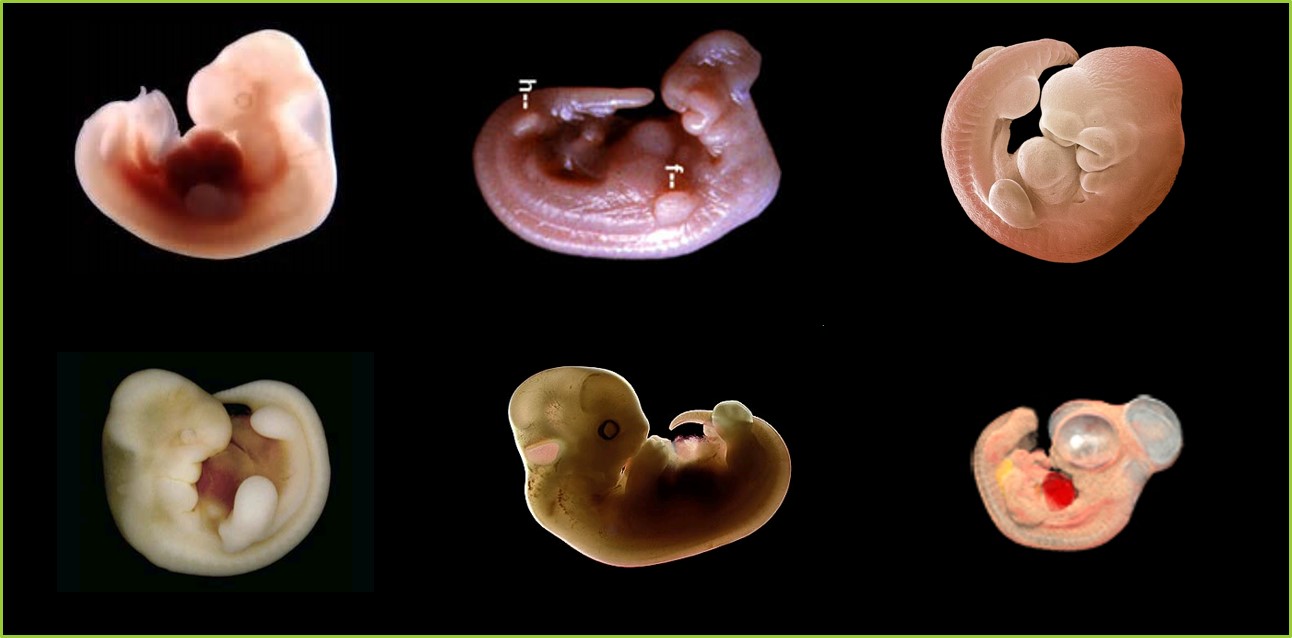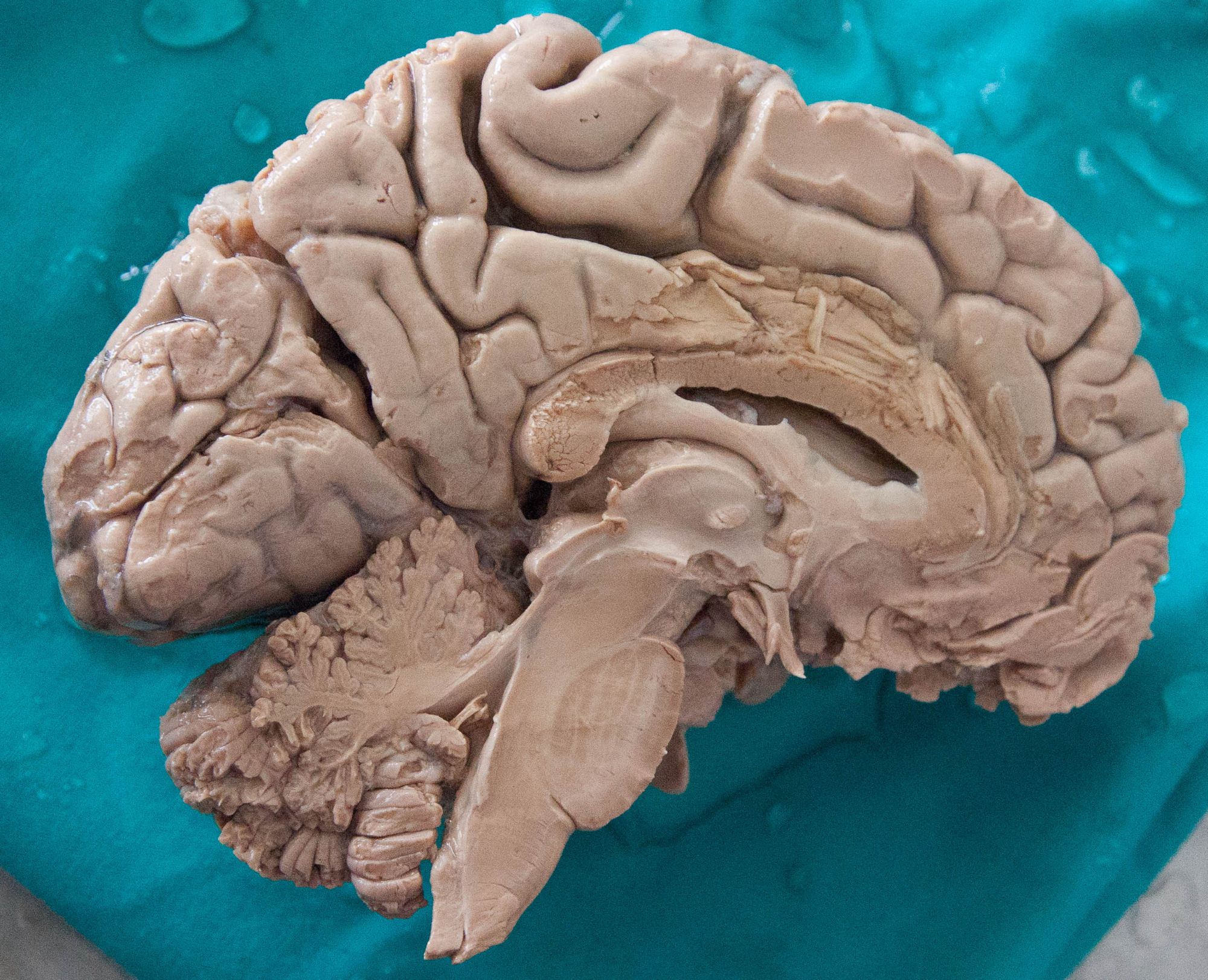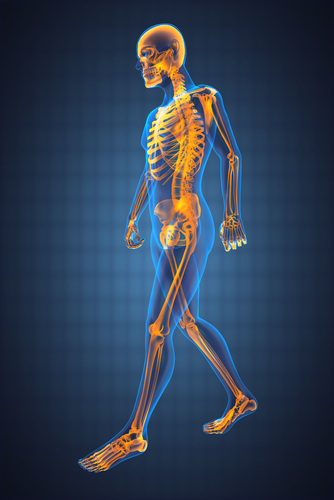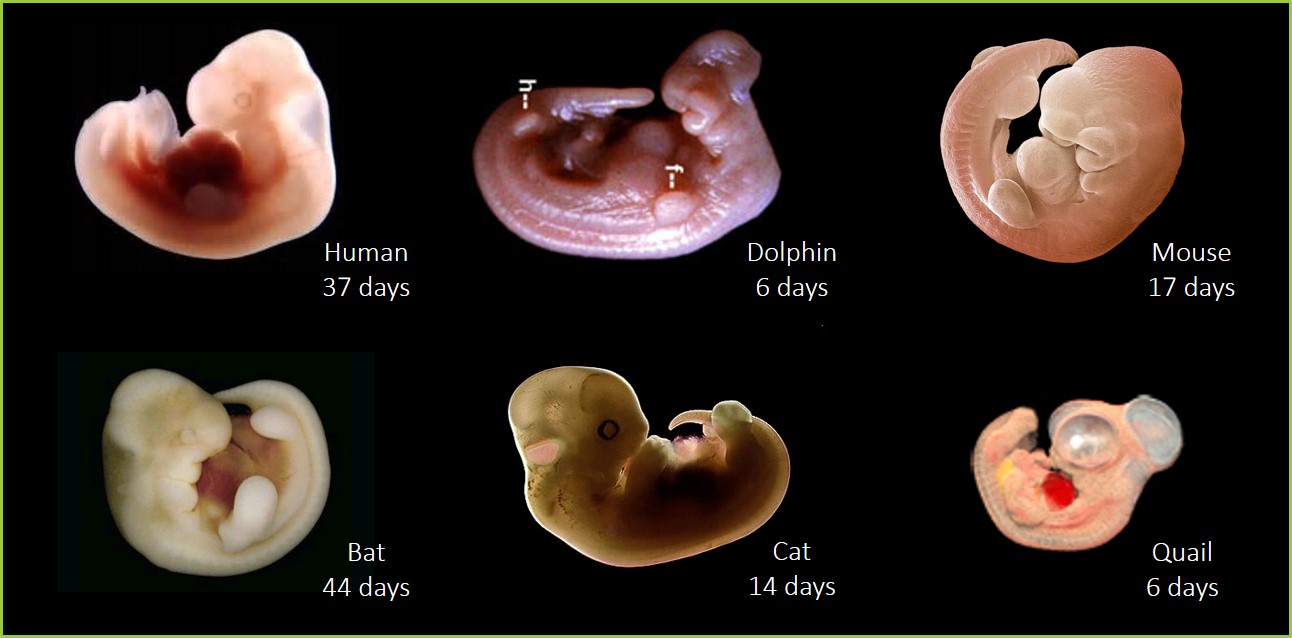
Explore 4.23 The Unity & Diversity of Life
Learning Objectives
By the time you have completed the 4.23. Introduction & Exploration Activities, you should be able to:
- Understand the meaning of the following terms/concepts and be able to identify examples of each: diversity of life, unity of life, descendancy, homologous trait, analogous trait, anatomical homology, biochemical homology, embryonic homology, vestigial homology, fossil record. Also, identify characteristics that distinguish living organisms from nonliving things.
- Identify characteristics that make humans 1) similar to (unified with) the rest of life (including embryonic, biochemical, anatomical, and vestigial homologies) and 2) different (diverse) from the rest of life. Also, describe the causes of life’s unity (descendancy) and diversity (adaptation/innovation).
- Identify characteristics of humans that classify them as animals (kingdom Animalia), vertebrates (subphylum Vertebrata), mammals (class Mammalia), primates (order Primate), hominids, hominins, and Homo sapiens (genus & species)?
Scientific Terms/Concepts
Terms: Diversity of Life, Unity of Life, Descendancy, Homologous Trait, Analogous Trait, Anatomical Homology, Biochemical Homology, Embryonic Homology, Vestigial Homology, Fossil Record.
Define and give an example of each term:
Term:
Diversity of Life
Definition:
Example:
Term:
Unity of Life
Definition:
Example:
Term:
Descendancy
Definition:
Example:
Term:
Homologous Trait
Definition:
Example:
Term:
Analogous Trait
Definition:
Example:
Term:
Anatomical Homology
Definition:
Example:
Term:
Biochemical Homology
Definition:
Example:
Term:
Embryonic Homology
Definition:
Example:
Term:
Vestigial Homology
Definition:
Example:
Term:
Fossil Record
Definition:
Example:
Identify characteristics that distinguish living organisms from nonliving things. Define and give a function of each characteristic:
Term:
DNA
Definition:
Example:
Term:
Cells
Definition:
Example:
Term:
Growth and Development
Definition:
Example:
Term:
Homeostasis
Definition:
Example:
Term:
Environmental Sensitivity
Definition:
Example:
Term:
Metabolism
Definition:
Example:
Term:
Reproduction and Heritability
Definition:
Example:
Term:
Evolution
Definition:
Example:
Human Similarities & Difference from Other Life
Identify characteristics that make humans 1) similar to (unified with) the rest of life (including embryonic, biochemical, anatomical, and vestigial homologies) and 2) different (diverse) from the rest of life. Also, describe the causes of life’s unity (descendancy) and diversity (adaptation/innovation).
What characteristics set you apart from other life forms? Make a list of notable differences below.
List some features that humans share with chimpanzees?
List some features that humans share with cats, dogs, and horses?
OK, let’s do one more of these. List some features that humans share with snails, insects, starfish, worms, etc.?

Identify the embryo of the mouse, bat, bird (quail), human, dolphin, and cat in the image above.
Living Classifications
Identify characteristics of humans that classify them as animals (kingdom Animalia), vertebrates (subphylum Vertebrata), mammals (class Mammalia), primates (order Primate), hominids, hominins, and Homo sapiens (genus & species)?
List the classification (taxons) to which humans belong, give the characteristic of each taxon, and an example of other organisms in that taxon:
Taxon:
Domain
Characteristics:
Example:
Taxon:
Kingdom
Characteristics:
Example:
Taxon:
Phylum
Characteristics:
Example:
Taxon:
Subphylum
Characteristics:
Example:
Taxon:
Class
Characteristics:
Example:
Taxon:
Order
Characteristics:
Example:
Taxon:
Family
Characteristics:
Example:
Taxon:
Genus
Characteristics:
Example:
Taxon:
Species
Characteristics:
Example:
Is descent through modification the only place we came from?
Though this is a science class, let’s take a step back and consider what we know about the origins of the physical human body from revealed truth. As we consider this topic, it is important to keep in mind what Elder D. Todd Christofferson taught in April 2012 General Conference. He said:
“It should be remembered that not every statement made by a Church leader, past or present, necessarily constitutes doctrine. It is commonly understood in the Church that a statement made by one leader on a single occasion often represents a personal, though well-considered, opinion, not meant to be official or binding for the whole Church.”
And, what Elder Neil L. Andersen taught in October 2012 General Conference as quoted by President Dallin H. Oaks in October 2019 General Conference:
“The doctrine is taught by all 15 members of the First Presidency and Quorum of the Twelve. It is not hidden in an obscure paragraph of one talk.”
Over the years, many Church leaders have shared their personal views or opinions on the question of the origins of the physical human body, but let’s apply what Elders Christofferson, Andersen, & Oaks have taught and apply it to the question of the origins of the physical human body specifically, not the origins of our spirits – which we actually know a lot more about via revelation than we know about the origins of the physical body via revelation.
We know that the creation of the human body was part of the process of the creation of the Earth (Genesis 1: 26-27) and that our bodies are created in God’s image, but the scriptures do not indicate the process by which human bodies were created. The closest description is this: humans were made “from the dust of the Earth” (Genesis 3:19). We also receive information about the origin of humans in the temple. During our temple worship, we review the plan of salvation and the role of the creation. It is interesting to note that during that presentation we are taught that man is first organized and then his spirit is put into his body, thus the body and the spirit are the soul of man. Of course, the body must exist before the spirit can inhabit it, but again, there is no information provided regarding the process by which the physical human body, or the body of any living thing, was formed. The bottom line here is that revelation presents no doctrine regarding the origin of the physical body of humans that requires conflict with what we have discovered by investigating the modern human body and the fossil record. This should not surprise us, because God is the source of truth in scripture and the source of truth in nature. So, we are free to consider what we learn scientifically and how it supplements what we know from revelation. This is one of the great blessings of being a member of a church in which people are encouraged and expected to learn all they can. As President Brigham Young once said, “We should be a people of profound learning pertaining to the things of the world.” (Journal of Discourses 8: 40, 8 April 1860).





